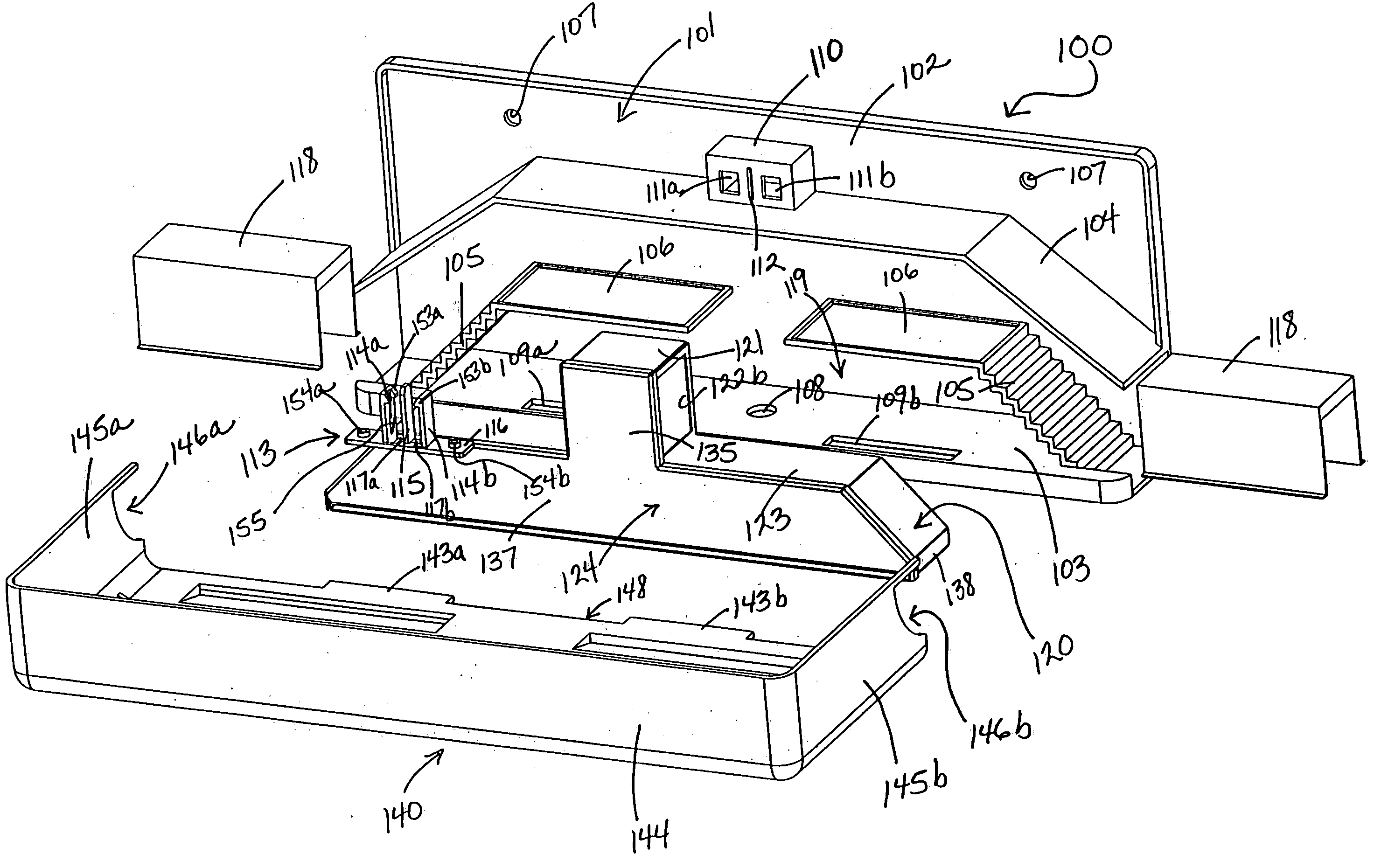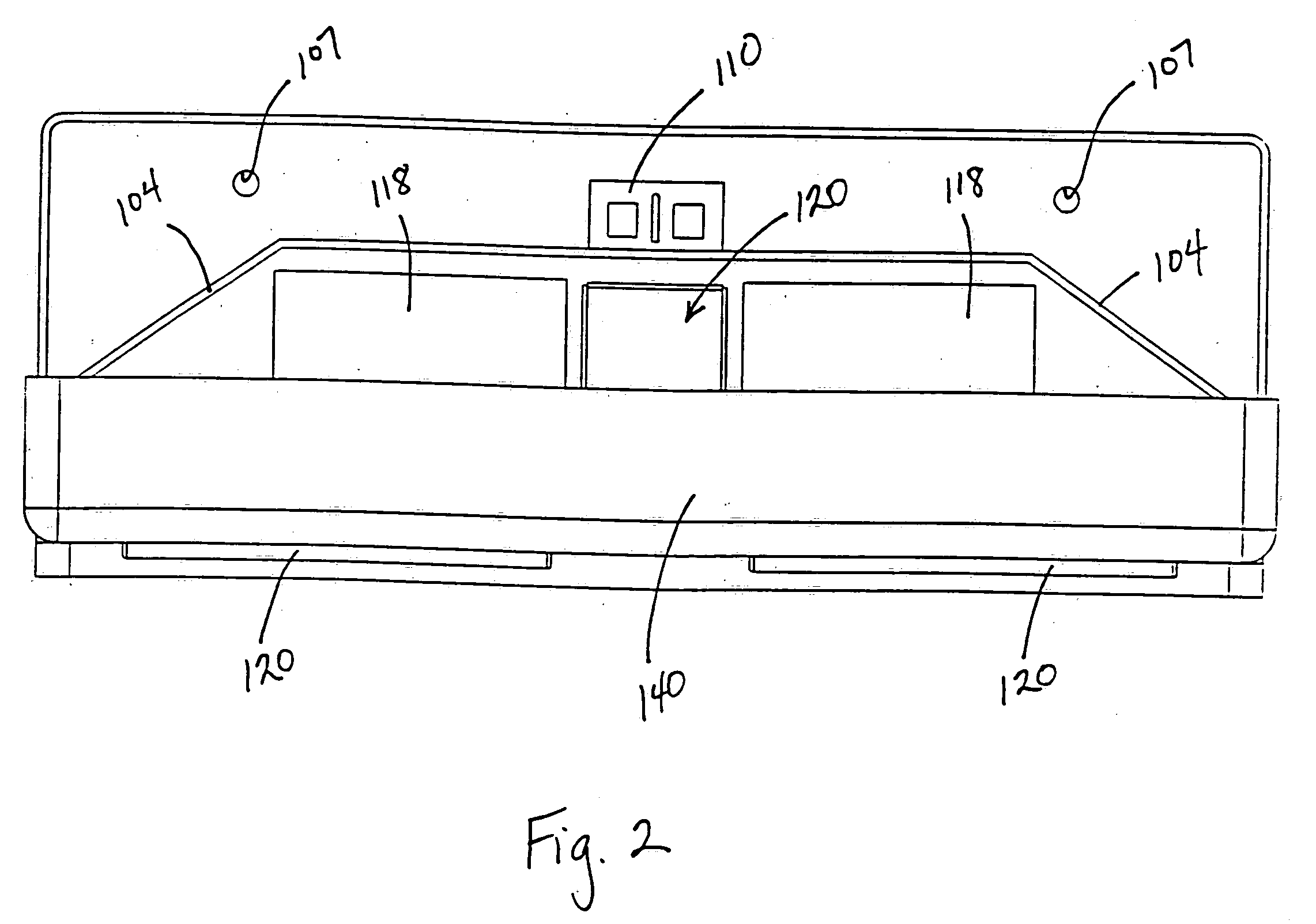Rodent trap
- Summary
- Abstract
- Description
- Claims
- Application Information
AI Technical Summary
Benefits of technology
Problems solved by technology
Method used
Image
Examples
Embodiment Construction
[0032] With reference to the drawings, a preferred embodiment rodent trap constructed according to the principles of the present invention is referenced by the numerals 100 and 200. It is understood that the words rodent and rodents may be used interchangeably herein as the rodent traps 100 and 200 may be used for one or more rodents.
[0033] As shown in FIGS. 1-8, a preferred embodiment rodent trap 100 includes a base 101, a trap assembly 118, an insert receptacle 120, and a cover 140. The trap 100 may include a housing, which may include the base 101 and / or the cover 140.
[0034] The base 101 includes a wall portion 102 and a floor portion 103, which are preferably operatively connected at an approximately 90° angle to one another and are preferably molded as one piece. The wall portion 102 and the floor portion 103 are preferably configured and arranged to be placed against a wall and a floor, respectively, or similar structures, at the intersection therebetween. An optional ledge ...
PUM
 Login to View More
Login to View More Abstract
Description
Claims
Application Information
 Login to View More
Login to View More - R&D
- Intellectual Property
- Life Sciences
- Materials
- Tech Scout
- Unparalleled Data Quality
- Higher Quality Content
- 60% Fewer Hallucinations
Browse by: Latest US Patents, China's latest patents, Technical Efficacy Thesaurus, Application Domain, Technology Topic, Popular Technical Reports.
© 2025 PatSnap. All rights reserved.Legal|Privacy policy|Modern Slavery Act Transparency Statement|Sitemap|About US| Contact US: help@patsnap.com



